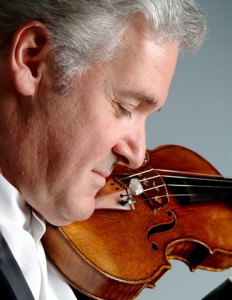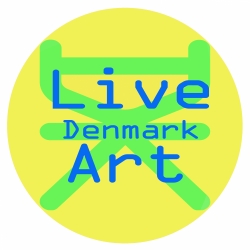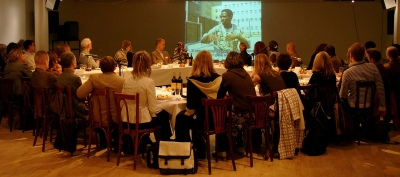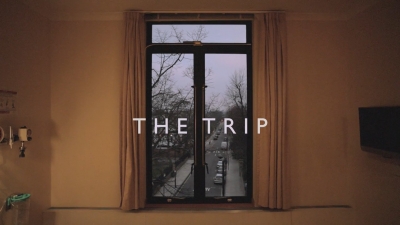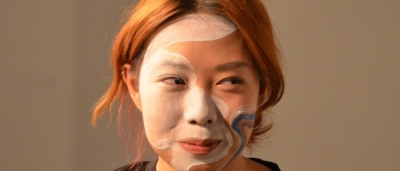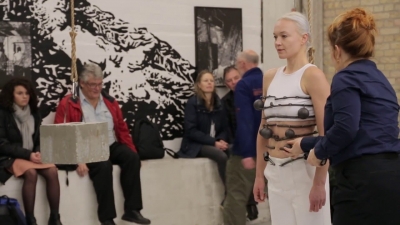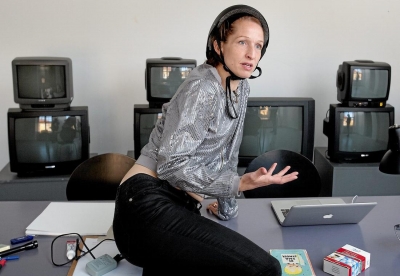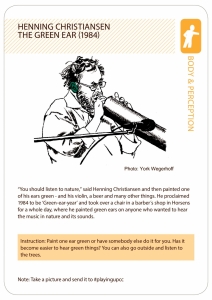2020年11月
Ellen Friis和我初識於1990年代,當時我們都在哥本哈根修讀劇戲史。那時候,行為藝術(performance art)被視為過去的事物:文字紀錄通常會附帶一幅當時演出的圖片;幸運的話,我們還可看到一段錄製得很差的演出影片。2000年我倆移居柏林時,情況有了變化。人們在2000年代重新恢復了對行為藝術的興趣,我們每週都可以看到現場表演。2004年,我們更成立了「現場藝術.丹麥」(Live Art Denmark)。
學習戲劇史時,我們發現普遍的看法與行為藝術理論家Peggy Phelan的觀點不謀而合:她強調行為藝術一瞬即逝,無法被保存、記錄或化為文獻;它只存在於演出現場,以及現在參與者的心中。另一些人則把行為藝術視為抗爭或政治藝術形式,或是跟學術界對抗的藝術形式,拒絕被輕易歸類。
在修讀行為藝術時,我們總是被告知這種藝術是無法研究的,因為它發生時我們都不在場,這總讓人覺得奇怪。許多表演理論家都否認複製的價值,但這藝術形式卻被一層層文獻紀錄包圍住了。這種矛盾令行為藝術研究變得更有趣。
現場表演紀錄
自從成立現場藝術.丹麥以來,我們已把大量作品拍成了錄像或照片。我們的網站主頁展示了三百多個由我們主辦的作品的文字和照片,其中有二百多個可在YouTube上收看。除了記錄我們自己的內容外,我們還積極探索記錄行為藝術的各種方法。我們自問:到底我們想記錄甚麼?是氣氛還是內容?有多少物件?為甚麼保存某件作品這麼重要?我們希望這份紀錄會起到甚麽作用?給誰看,又給多少人看?一份文獻紀錄必須代代流傳,人人皆知嗎?還是可以單純作為私人記憶,僅保留幾年時光?我們記錄是為了文獻存檔,還是為了新的觀眾?
當代法國哲學家Alain Badiou曾撰寫「對真實的激情」[i],闡述前衛藝術家如何自命為這種激情的代表。這就是為甚麽行為藝術家大多喜歡實時處理真實材料,而避免模仿其他事物。
現場藝術.丹麥在2004年推出首個作品《尋找擁有歐盟護照的丈夫》(Looking for a Husband with an EU Passport),是Tanja Ostojić 的演出講座(performance lecture)。 2000年8月,Ostojić刊登了一則廣告,標題正是作品的名稱。她與來自世界各地的申請人通了五百多封信。她跟一位德國藝術家以書信傳情半年後,於2001年在貝爾格萊德當代藝術館(Museum of Contemporary Art, Belgrade)前安排了一場公開表演,跟對方會面。一個月後,兩人正式結婚,她也搬到了歐盟/德國。她的演出講座展示了這件作品直至她婚前的進度。這段婚姻必須維持五年,她才能留居歐盟。整個項目耗時數載,要是沒有好好記錄下來,能看到的觀眾就十分有限。這場演出講座為作品添加了新的層次,因此很難將現場表演和文獻紀錄分開。正如Simone Osthoff在《以檔案為表演》(Performing the Archive)一書中寫道:
在許多表演和實時活動中,藝術作品的紀錄最後常與作品本身互換位置。通常我們採用與「原本作品」不同的媒介來製作文獻,然後這份文獻會繼續與觀眾互動,且往往透過大眾傳媒實現。因此,本來藝術對真實事物——說到底就是真實生活中的結構和姿勢——的強調,最終將藝術再現的問題轉移至文獻紀錄的領域(通常以攝影或錄像形式呈現)。[ii]
Tanja Ostojić:《晚餐對話》(A Dinner Conversation),一場關於「融合計劃」(The Integration Project)的演出講座,內容包括《尋找擁有歐盟護照的丈夫》(攝影:Gert van der Pumperlei)
把作品記錄下來,對資助作品的基金會來說有其實際需要,也是藝術家為自己而保留的珍貴紀錄。但是我們一直認為,出色的文獻紀錄應該成為一種新的表演體驗。本文試圖概括我們的一些想法,輔以相關作品的說明。所描述的項目約有一半不是由現場藝術.丹麥主辦的,但其實我們都很想玉成其事。優秀的文獻紀錄本身就是一種藝術形式!
我們的第二場演出——Wagner-Feigl-Forschung/Festspiele的《行為藝術百科全書》(Encyclopedia of Performance Art)正是如此。在2004年的演出,兩位藝術家Otmar Wagner和Florian Feigl先作介紹,說行為藝術家通常很難知道自己的材料是否早有先例,因此他們創作了《行為藝術百科全書》。例如,其中有段頗長的章節,交代在行為藝術中前人使用番茄的情況:哪位藝術家用過西紅柿?用番茄跟用番茄醬有甚麼區別?學術界對這次演出十分滿意,覺得百科全書的確可以大派用場,但兩位藝術家並非真要編寫一部完完整整的行為藝術百科全書,而是想藉此啟發自己和其他人。
兩位藝術家在2020年於柏林Sophiensaele劇場演出的最新作品,拆解了一輛汽車,將零件用在不同的小型表演,看看有甚麽其他方法可讓一部汽車發揮功能,同時探索行為藝術的歷史。有一晚是燈光表演,演出長度就是汽車電池足夠供應車燈電力的時間。作品充滿了對其他行為藝術家的引用,如Wolfgang Flatz、Chris Burden、Wolf Vostell等等。如果那些人的作品沒有被記錄下來,Wagner和Feigl的表演相信會很不一樣。
藝術家需要觀摩其他藝術家的過往作品,去發展自身的實踐,不致因襲前人。沒有充分的文獻紀錄,學者將不會看到重要藝術家之作,更無法拿來比較、討論。博物館和美術館亦將無從展示它們,更不會有更多觀眾接觸到它們。要有周詳的文獻紀錄,才能確保行為藝術作為一種藝術形式的地位。
自2004年以來,整理文獻資料已成為我們實踐的一部分。這些紀錄不僅比實際作品擁有更多觀眾,而且紀錄往往就是作品本身,或是與作品密不可分。
口述文獻紀錄
在作品《射擊》(Shoot,1971)中,一位朋友看似向美國行為藝術家Chris Burden的手臂開槍。表演用幾部攝錄機拍了下來,但是在Burden向公眾展示的材料,卻找不到槍擊鏡頭,只聽到彈殼落地的聲響。
幾年後,當他應邀參加「威尼斯雙年展」時,給每個在帳篷外排隊的人,講述了事件的私密版本。到底是否有槍擊發生早已令人懷疑,而帳篷內每個人所聽到的大同小異的版本,更沒有把混亂澄清,讓真相大白。但是由於該作品要說的是人們的期望、媒介的記錄以及人們對何謂真相無所適從,所以這是一種高明的紀錄方式。這本身就是一個新作,對在場的人更是一次難忘經驗,而對於僅有所聞的人則是一樁引人入勝的趣事。
表演學研究教授Nick Kaye寫道:「如果表演能通過謠言而存在,那麼現場藝術的轉瞬即逝與其留下的物質記錄,這兩者之間的傳統對立就變得難以確定了,因為作品可能主要藉著這些留存的紀錄而在世間流傳。」[iii]2001年,他在奧斯陸藝術館(Kunsthall Oslo)觀看了挪威藝術家Lars Ramberg的演出《事關香腸般重大》(ES GEHT UM DIE WURST)。香腸、名貴汽車和車房——直到後來他在酒吧與Ramberg交談,才發現這些東西挺有深意。
原來Ramberg和另外三人乘坐奔馳房車從柏林出發,車上載有一百公斤法蘭克福熏肉腸。當時,挪威因擔心豬流感蔓延,禁止肉類入境。他們便從瑞典繞道去了一處偏僻的邊境,偷偷進入挪威。過境時,每個人都在衣服裡塞了二十五公斤香腸,然後去了奧斯陸。這個故事很棒,但在奧斯陸藝術館的那場公共表演有一個屏幕,屏幕上可看到四個人置身於德國某處的加油站,其他則沒有多說。所以,如果你想知道整個故事,不得不在事後和表演者交談。
2007年,現場藝術.丹麥在第三屆「柏林空氣」(Berliner Luft)藝術節展示了英國藝術家Christopher Hewitt的作品《行為藝術點唱機》(The Performance Art Jukebox)。Hewitt為大家播放他的行為藝術文獻檔案。如果有人想看Chris Burden那一輯,他就播放出來。但是比這些鏡頭更重要的,是人們先前所聽到的種種傳聞;Hewitt又添上自己的八卦消息。點唱機上描述的一些作品,是來自行為藝術界的奇聞軼事和流言蜚語。某些作品可能是虛構的,但不會因此而減少趣味。有時候,一個藝術家為實現其創作而奮鬥的內幕情況,比實際作品更令人印象深刻。
2011年,現場藝術.丹麥在其論壇「Samtalekøkkenet」上放映了倫敦藝術家Marcus Coates的一些作品。在《旅程》(The Trip,2011)中,他與安養院臨終的人合作,幫助他們實現此生未圓的夢想。有個人一直想乘著獨木舟,在亞馬遜河上順流而下。Coates為他完成此舉,並拍下了多幅照片,但最後他選擇不讓對方看到照片,而是口頭描述這次旅行的細節,繪形繪聲,好讓該名男子擁有屬於自己的這趟旅行的記憶。在論壇上放映的錄像,我們只看到安養院窗外灰濛濛的倫敦街頭。顯然,觀眾也必須在腦海創造出自己的影像。
口述記錄的亞馬遜河之旅,遠比拍照記錄更為重要。當然,你永遠不可能在紀錄中完全客觀,但這始終視乎你的抉擇:你想努力如實報導,還是給觀眾或聽眾留下更多的想像?
Marcus Coates:《旅程》(影片截圖)
一個文獻紀錄理應保存作品的精粹。因此,「文獻紀錄」可能不是最好的用語。也許瑞典多媒體發表平台「PAM」創辦人Izabella Borzecka[iv]建議的「發表」(publication)一詞更佳,因為這意味著「使之公開」、接觸群眾,令作品在更多新觀眾面前煥發生機。在現場藝術.丹麥,我們記錄行為藝術作品的目的,不是為了保存歷史檔案,而是為了給未來的觀眾欣賞,因此我們始終關注文獻紀錄是否具有成為表演的潛力。
負責文獻紀錄的人可以決定記錄原本作品的某些方面,例如事件的實際順序或當時的氣氛。但是,最重要的一定是「現場」和「當下」的感覺,因為與其他藝術形式相比下,這才是行為藝術的特點。我們究竟如何保持「當下」的強烈感覺?文獻紀錄如何可以表演及創造出一個新的「當下」?
記錄表演的照片,或以照片為表演
2014年,我們應邀在哥本哈根Overgaden當代藝術學院一年一度的「文化之夜」主持一個項目。我們邀請了三位知名畫家,在成年人的臉上創作繪畫,項目就稱為《成人臉部彩繪》(Face Painting for Adults)[v]。對於通常躲在畫室工作、不為人見的畫家來說,這是一次可怕的經驗;而對於訪客來說,在臉上畫一幅通常所費不菲的畫作,也是一種新的體驗。他們保留畫作的唯一方法,就是拍攝下來,不然就是留在臉上帶回家去。
Katrine Ærtebjerg:《成人臉部彩繪》(攝影:Ellen Friis)
這項創作分幾個步驟進行:畫家首先成了表演者,而當訪客臉上塗了顏料,走上街頭,他們也成為表演者。隨著圖像在社交媒體上傳播,作品又有了第三次生命,再次表演給新的觀眾看。這是一種刻意短暫保存的文獻紀錄,旨在研究傳統繪畫和行為藝術在持續時間、生產條件和經濟價值上的差異。
照片是記錄行為藝術的絕佳方式,因為照片可以使作品顯得極具張力,即使事實並非如此。美術館深知此中竅門,有些博物館似乎會特意邀請那些作品格外上鏡的藝術家,以便於放在Instagram上宣傳。一份優秀的文獻紀錄,核心要素在於能使觀眾的身體或心智,甚至身心兩者,都受到吸引而投入其中。今天,人人都喜歡用手機拍照,尤其是拍下自己或朋友在現場的身影。
但照片之所以如此出色,還在於我們大腦運作的特性。當我們僅能體驗作品的部分紀錄時,大腦自會通過想像,創造內心圖像,以補足所欠缺的訊息。出色的文獻紀錄能令觀眾遐想連篇。照片作為文獻資料,是那些「沒有」呈現的東西在發揮作用。一位才華橫溢的藝術家深知要透露多少,以及甚麽不可透露,才可吸引觀眾。蘇格蘭行為藝術家Alastair MacLennan和愛爾蘭行為藝術家Amanda Coogan曾有一場對話,經由Áine Phillips記錄整理,說「兩人都同意,靜態的攝影紀錄,往往更能栩栩如生地傳達一場表演作品的內容。」Amanda Coogan更說:「現場表演有時是無法翻譯的。我通常更喜歡拍下來的照片,不過它們會讓人想到別的地方去。」Áine Phillips補充說:「攝影的靜態文獻紀錄,常常會開拓出一個神秘而開放的空間,讓觀看者馳騁想像,為作品賦予意義。」[vi]
如前所述,Chris Burden精於故意製作疑幻疑真的文獻紀錄。另一位是丹麥藝術家Lea Porsager,她曾以作品《無我實驗》(Anatta Experiment,2012)參加第十三屆「卡塞爾文獻展」(documenta)。作品講述在瑞士南部阿斯科納鎮的真理山(Monte Verità)發生的事情。1900年代初,這座深具魅力的山丘吸引了許多無政府主義者和神秘學家。2011年夏天,Porsager邀請了七位朋友前往真理山的主樓「無我之家」(Casa Anatta),他們在這週創作的作品後來在文獻展展出,那些圖像「神秘」且幾乎無法破解——幾乎。
第三個例子是英國藝術家Hayley Newman,她出版了一本書,名為《含意—表演圖像1994-1998》(Connotations – Performance Images 1994-1998),其中的圖像包含了她在這幾年間完成以及當時仍在構思的作品。但是,她仍覺得這些都屬於她的實踐和背景,因此決定花一週時間,將以前這些圖像全部搬演一次,並拍攝下來。當然,這一週就相當於一場表演,她不斷改變頭髮長度和膚色,使之配合相關作品的年份和季節。
展覽
在大多數博物館,行為藝術表演作為一種藝術形式,並沒有被賦予一個明確的空間。博物館沒有展示和保存這種藝術形式的標準方法。繪畫已具備了修復保存的妥善技術,但是就行為藝術而言,每件作品均須個別處理。人們不能像重看一幅畫作那樣輕易重看一場行為表演,而為了統計入場觀眾,博物館喜歡的作品,比行為藝術一般保留得更長久。而解決此問題的常見方法,是利用現場表演之後遺下的剩餘物件。
丹麥藝術家Sophie Dupont在其行為表演《重的光》(Heavy Light)中創作的畫布複製品,可拿來展出或出售。菲律賓出生的丹麥行為藝術家Lilibeth Cuenca Rasmussen則另覓蹊徑:在展覽開幕前一週,她邀請家人和其他藝術家用不同材料與她一起創作。 2002年,挪威行為藝術家Tone Avenstroup在奧斯陸設立了一個行為藝術交流館,這是個文獻庫,收藏了她在過去表演用過的物件。你可以拿自己表演的物件來交換(要是這些物件能帶出動人的故事),使展覽保持活力。
Sophie Dupont:《重的光》(Kulstof 15 / Nordkraft Aalborg Denmark)(攝影:Ellen Friis)
文獻庫這形式可以追溯到好幾個世紀前的珍奇屋(Wunderkammer,即博物館的前身),當時的收藏家根據各自的原則和自定的規矩,將稀奇或日常物品以及文物資料分類存檔。法國哲學家Jacques Derrida在《檔案狂熱:弗洛伊德印象》(Archive Fever: A Freudian Impression)一書中說,人類第一份存檔文獻就是十誡:
如你所知,「檔案」一詞的希臘原文(Arkhé)同時表示開始和誡命。顯然,這裡兩個原則成了一體:一是根據自然或歷史的原則,表示事物開始(物理、歷史或本體論的原理),另一是依據法律的規則,表示需要行使命令和權力,以及維繫社會秩序,是命令發出的場所(法理學的原理)。[vii]
德國行為藝術家兼策展人Boris Nieslony在科隆成立的檔案館「Black Kit」是當代版的珍奇屋,裡面的收藏品(哪怕跟行為表演有些微關係的)全都按字母順序儲存在盒子和文件夾內。例如,在字母K下,有來自KANADA的行為表演,以膝蓋(KNEES)進行的印度宗教儀式,以及放了他友人Norbert KLASSEN骨灰的骨灰甕。
書寫
如照片一樣,寫作是一種相當有效的紀錄方式。我們讀過一本精彩的書,是關於德國著名行為藝術家Josephs Beuys的作品,內容仔細描述了他某次表演的每個動作。讀者須通過內心形成的圖像,才可參與其中。從2004年到2009年,我們在自己舉辦的四屆「柏林空氣」藝術節上,也使用了這種方法,在哥本哈根向大家介紹德國劇場。[viii]
但是書面記錄本身也可以是一項具有行為表演性質的研究:美國行為藝術家 Allan Kaprow曾在著作中提及,有個女人在日記裡記下每天在不斷變化的沙地上散步,以便研究是否可根據描述重來一次完全相同的散步。[ix]1843年,一位重要的丹麥行為藝術家(也是存在主義哲學家)Søren Kierkegaard描寫過類似的研究。他一生住在哥本哈根,僅曾有兩次出境,第一次去了柏林參觀劇院,然後再去柏林一次,看看是否可以完全重複之前的體驗。他在《重複》(Repetition)一書中借虛構人物Constantin Constantius記下了這項研究的經過。後來,丹麥行為藝術家Ellen Friis在她的「六聖人」(Six Saints)系列其中一部,重新走了一遍這條路線。[x]
Ellen Friis:「六聖人」(攝影:Gert van der Pumperlei)
《誘惑者日記》(The Seducer’s Diary)中的Johannes,是Kierkegaard的另一個角色。Kierkegaard的多重身份,以及他在著作中對藝術與生活之間的模糊界線所作的研究,都非常具有現代特色。譬如,當今的丹麥表演者兼作家Madame Nielsen的作品,就是步其後塵。Madame Nielsen於1963年出生,原名Claus Beck-Nielsen。2001年,他宣佈自己去世,然後變身成為一間名為「Das Beckwerk」的機構,繼續製作藝術品和裝置,以及出版書籍。儘管如此,人們還是稱他為Claus Beck-Nielsen。他宣稱去世近十年之後,決定為自己舉行葬禮。2011年,他把自己的全身雕像送去下葬;2013年,改以Madame Nielsen的身份出現,從事表演、唱歌和寫作。
就像文獻紀錄可以成為行為藝術一樣,藝術批評也可以是富有行為表演色彩的批評。 Mary Paterson和Rachel Lois Clapham共同成立的「開放對話」(Open Dialogues)及其項目「對表演的評論及以評論為表演」(Critical Writing on and as Performance)汲取了現存的現場藝術作品中的一些想法,研究並探索這些作品可發展的方向。他們還於2014年在哥本哈根舉辦了一場名為「批評家與雞尾酒」(Critics & Cocktails)的研討會,這是Mary Paterson駐留現場藝術.丹麥時策劃的活動之一。
著重過程的藝術形式,不是由結局和成果來界定的,而是從這些形式的開端、意念的關聯,以及能否邁向新領域來定義。對過程的評估本身應該也是一個過程;或是關於過程之為過程。不妨試問:對下一個動作的期望,如何影響你目前所見的事物?
錄像
也許最常見的文獻格式是影片和錄像。對傳統劇院或戲院來說,這沒甚麽問題,反正舞台通常都像平滑的電視屏幕一樣。將發生的一切都記錄下來,對於要在博物館精確重構一件作品而言,可以相當便利,但這樣做很少帶來有趣的體驗。也許甚至因為觀眾看到太多內容,反而提不起勁去想像缺失的訊息。
本文提到的藝術家,有幾位在表演作品前,會仔細計劃過如何記錄存檔。像丹麥藝術家Christian Falsnaes,一直在錄製自己的表演,而且非常專業,往往那份文獻紀錄「不折不扣」成了他的作品。2006年,評論家Philip Auslander在其文章〈演出紀錄的表演性〉(The Performativity of Performance Documentation)中寫道:「將某一事件當作行為藝術表演般記錄下來,就令這事件真的成了一次行為表演。」[xi]Falsnaes的許多作品都是如此。他參與了我們的iPad表演系列「Now and Again」,該系列旨在製造各種新的行為表演情境。除了Falsnaes外,參加這系列的藝術家還有Lilibeth Cuenca Rasmussen、Joachim Hamou、Cecilie Ullerup Schmidt、Ellen Friis、Stine Marie Jacobsen、Erik Pold和Olof Olsson。他們的作品於2014年在哥本哈根攝影中心(Fotografisk Center)逐一展出。
Falsnaes在「Now and Again」的行為表演,要求觀眾與他一起跳舞,並在一個盒子內觸摸自己,而在特定時候這舉動會被其他訪客從外面看到。Falsnaes也在此首次使用數碼媒體,直接向觀眾發問。
Christian Falsnaes:《Now and Then》(影片截圖)
錄像格式還可讓藝術家發揮操縱時空的可能性。例如,倫敦藝術家兼鳥類學家Marcus Coates在《本地鳥》(Local Birds,2001)中利用錄像加快了時間,令表演者活像他們喜歡的鳥兒一樣,也在鳴囀顫抖。
行為藝術的虛擬現實檔案
多年以來,我們用過各種文獻紀錄方法,後來又採用虛擬實境:當2016年出現新一代的VR技術時,我們購買了一部小型的360度全景相機,測試一下這科技是否有用。我們發覺長約二十分鐘、在白色的畫廊空間給八至十個人觀看的一般小型表演,最適合用這個技術。
由於效果不俗,我們在2018年購買了更昂貴的相機(Insta 360 Pro),內置六個小鏡頭,可拍攝8K影片。在我們試過的所有文獻紀錄之中,以這個最能模擬出現實的真貌。除了看到作品本身外,觀者還可體驗到房間的氣氛以及與觀眾的互動,也能像現實世界那樣隨意回頭轉身,專注他們想要觀察的事物,不管是現場的伴奏者、頭頂的藍天,還是正在表演的藝術家。目前,我們有一些特製眼鏡,其內置硬碟可容納約二十個攝錄片段,還可以用無線連接到電腦,存取完整的攝錄內容。
我們去過喀麥隆、多倫多、斯德哥爾摩和許多其他地方,充分利用了這些特製眼鏡,就像主辦了一個袖珍的行為藝術節,讓其他人對丹麥的行為藝術有個初步印象。同時,我們會把新作品拍攝下來,帶回丹麥放映。
事件譜
除了虛擬實境,我們也在走另一條路。「事件譜」也許可說是記錄行為藝術的最古老手法,在1960年代特別流行。激浪派藝術(Fluxus)和《未來主義食譜》(Futuristic Cookbook,1930)是這方面的先驅。藝術家用詩意的語言,為藝術作品寫下食譜,大概不是為了讓讀者如法炮製,只是希望能重現於讀者的想像。1960年代及以後出現的事件譜,本身可能很有詩意,且在許多情況下也希望讀者能照著去做。
我們自修讀行為藝術的時候,便對事件譜很感興趣,卻一直未遇上合適的時機。直到翻開Ken Friedman的事件譜《激浪派即演即有劇場》(Fluxus Instant Theater,1966),讀到「將激浪派的事件重新製譜,給觀眾表演,現場可由指揮者帶領觀眾」,才靈機一觸。於是我們開始搜集事件譜,在工作坊展示,還舉辦了有連串輕鬆表演的活動「Virak Revy」,與觀眾一起依照事件譜,創作了十五件作品。
其中一件作品是Alison Knowles的《做沙律》(Make a Salad,1962)。觀眾(重新)創造該作品時,便是受邀加入藝術創作過程而進行選擇。你該拿冰箱裡剩餘的菜來做沙律?還是從英國泰特現代美術館(Tate Modern)的陽台上扔下一百公斤沙律?為甚麼選擇這樣做,而非那樣做?當然,傳統戲劇和標上音符的樂譜,也對演員和音樂家提出類似挑戰。
重演
在我們個人的職業生涯中,都曾拿其他藝術家的作品來重做一遍。2019年秋天,我們上演了《PLAYING UP》的新版本,這個遊戲原本由漢堡「Fundus Theater」和倫敦「Live Art Development Agency」製作,包括三十六張有關行為藝術歷史的卡片,卡片用幾句話簡要概括了一件作品,另外交給觀眾一些物件和工具,讓他們重新演繹作品,以此取樂。表演首次於2016年在泰特現代美術館展出,2019年又由現場藝術.丹麥策劃在哥本哈根當代藝術中心(Copenhagen Contemporary)演出。《PLAYING UP》完美延續了我們自身在行為藝術領域的工作方式。
Henning Christiansen:《綠耳》(The Green Ear,1984)(圖片來源:《PLAYING UP》北歐版)
塞爾維亞行為藝術家Marina Abramović早前說過:「記錄行為藝術作品的唯一真實方法,是重新表演那件作品。」[xii]這對於她的作品《釋放聲音》(Freeing the Voice)確是如此,該作包含在《PLAYING UP》中,於1976年在布達佩斯演出。在錄像中可見到Abramović歪著頭仰臥,讓觀眾和攝錄機都能看到她整個臉龐。重新表演該動作,體驗一下這樣做對自己身體的影響,這樣不但令作品增添了重要新層次,而且比僅僅閱讀有關資料或觀看作品錄像,感受得更為深刻。
現場藝術的遊戲,本身就是一件作品,同時也指示了其他人如何玩耍。其他藝術家也使用過遊戲的格式,例如英國藝術家Joshua Sofaer。他開發了一款家用的行為藝術家遊戲,還進一步探索了其他受電視真人騷影響的格式,例如公眾尋寶遊戲,以及投票選出某人的名字,放在大廈頂上變成發亮的大型招牌,使那人馬上成為萬眾觸目的人物——這項目就叫做《發光的名字》。
自2019年以來,我們邀請了駐留哥本哈根當代藝術中心的藝術家,把他們展示的作品製成事件譜,以便教育部門將來與參觀博物館的訪客一起重構作品。
結論
不同的作品需要不同的紀錄方式。有些作品沒有文獻紀錄會更好,某些作品則最適合拍成影像。我們需要決定應否讓文獻紀錄本身也成為藝術品,而且理想的話,可以在展示原作前就將此納入創作計劃。還有,文獻紀錄應該顯示恰如其分的訊息,不要太少,而更重要的是,不要太多。觀者需要憑藉自己的想像力,去補足缺漏,方可與作品產生深度連結。
(本文獲Ellen Friis協助完成。)
中譯:昌明
[i] Alain Badiou. The Century (Oxford, UK: Polity Press, 2007): 1.
[ii] Simone Osthoff. Performing the Archive: The Transformation of the Archive in Contemporary Art from Repository of Documents to Art Medium (New York, US & Dresden, Germany: Atropos Press, 2009): 58.
[iii] Nick Kaye. ”Liveness and the Entanglement with Things” in P. Clarke, S. Jones, N. Kaye & J. Linsley (Eds.)Artists in the Archive: Creative and Curatorial Engagements with Documents of Art and Performance (London, UK: Routledge, 2018): 26.
[iv] Izabella Borzecka 創辦的「PAM」是一個平台,供大家發表實驗出版、藝術及以動作為主的實踐。詳情請閱:https://www.pamsthlm.se/
[v] For details of Face Painting for Adults: http://liveart.dk/face-painting-for-adults/
[vi] Áine Phillips. “Art, Live & Videotape” in L. Keidan& A. Wright (Eds.) The Live Art Almanac Volume 3 (London, UK: Live Art Development Agency & Oberon Books, 2013).
[vii] Jacques Derrida. Mal d'Archive: Une Impression Freudienne (Archive Fever: A Freudian Impression) (Paris: Éditions Galilée , 1995). [English translation by Peter Krapp: http://hydra.humanities.uci.edu/derrida/arch.html]
[viii] Henrik Vestergaard & Ellen Friis.Berliner Luft – a burp from the lower regions (Copenhagen: Forlaget Gruppe Press, 2009). http://liveart.dk/2015/wp-content/uploads/2020/02/berliner_luft_endelig_elektronik.pdf.
[ix] Allan Kaprow. Essays on the Blurring of Art and Life (London, UK & Berkeley, Los Angeles, CA, US: University of California Press, 2003): 212-215.
[x] Six Saints: Søren Kierkegaard was performed at the Mellemrum Festival (Kitt Johnson) in Copenhagen in 2008. For details of Six Saints: Søren Kierkegaard: http://ellenfriis.dk/?page_id=163
[xi] Philip Auslander. “The Performativity of Performance Documentation,” PAJ: A Journal of Performance and Art, Vol.28, No. 3, (September, 2006): 5.
[xii] Nancy Spector, Erika Fischer-Lichte and Sandra Umathum. Marina Abramović: Seven Easy Pieces (Milan: Edizioni Charta, 2007): 11.
本網站內一切內容之版權均屬國際演藝評論家協會(香港分會)及原作者所有,未經本會及/或原作者書面同意,不得轉載。








